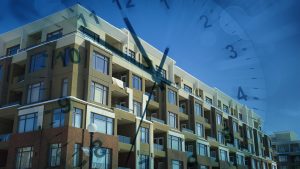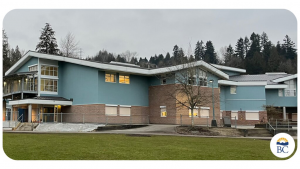By proposing that one room in every dwelling be capable of maintaining a temperature not exceeding 26 C by either mechanical or passive methods, British Columbia has drawn attention to the matter of solar gain. Windows and exterior glazing may find themselves on the front line.
Advances in glazing and window assemblies have resulted in improved U-value choices for residential and non-residential building owners alike. However, thatâs a heat loss issue, and the B.C. code proposals do not centre on thermal efficiency.
The solar gain of glazing is different than its thermal performance, Peter Dushenski, managing director of Edmonton-based , told the Daily Commercial News. Each has its own rating.
âU-values are the measure of thermal performance, the measure of a façadeâs ability to keep the inside a consistent temperature in the face of fluctuating exterior temperatures of a façade and are not impacted by how sunny or cloudy it is outside. Solar Heat Gain values measure how easily the sunâs radiation passes through a window to warm up an interior space.â
Why is B.C. taking this action?
âIn 2021, over a period of six days, 619 heat-related deaths occurred during a heat wave in British Columbia, which saw record temperatures reaching over 40 C,â the says. âIndividuals aged 70-plus accounted for 67 per cent of the deaths, 56 per cent of decedents lived alone and that heat-related death was higher for those with specific chronic disease.â
With more high heat days forecast for ºÚÁϳԹÏÍø over the next decades, maintaining safe and comfortable interior temperatures is becoming a health and safety issue as much as an energy efficiency concern.

British Columbia is throwing the solution back to designers.
âSome living spaces in a dwelling unit may be more challenging than others to control indoor temperature, so it is the designerâs choice which living space (minimum of one) is capable of maintaining the design temperature.â
How exactly can solar gain be addressed, and how can designers develop solutions?
In fact, those questions in hot climate regions for hundreds of years. Passive shading, along with natural ventilation, is evident throughout the Middle East, Africa and the Asian sub-continent. However, Western cultureâs fixation on modern mechanical air conditioning has resulted in less attention paid to such classic heat mitigation efforts.
Orientation to the sun is also critical, something often overlooked by housing developers when laying out new subdivisions. Window placement is often a second thought at best.
âMore attention to this important very ancient concern of solar orientation is certainly warranted today and in the future,â said Dushenski. âFor all of our technological progress in terms of mechanical ventilation and more reliable energy grids, we still canât change the location of the sun; we can only adapt to it. Every culture in history has recognized the importance of the sun and adapted to its mighty power. Why should ours be different?â
The B.C. code proposals deal only with residences, and as Dushenski notes, British Columbia has the warmest temperatures in ºÚÁϳԹÏÍø. Yet, B.C. often sets a high bar that others follow later.
What could be the implications of this mandated maximum indoor temperature for residential and non-residential buildings in other parts of ºÚÁϳԹÏÍø?
âWe need to be mindful not to paint all of ºÚÁϳԹÏÍø with the same broad brushstroke,â said Dushenski. âArchitectural design is at its core a very regional practice, even if our codes or voluntary standards donât always reflect this nuance as well as they could.
âHumanityâs fascination with glass, views and daylight isnât going away anytime soon,â he adds.
Furthermore, the health benefits of natural light flowing into buildings and the ability for occupants to look out are well established.
Innovative solutions like reactive electrochromatic coatings that reduce solar gain through glass may be more costly today, but project owners and designers need to adopt a long-term perspective as they plan projects with an expected useful life of 50 or more years.
John Bleasby is a Coldwater, Ont.-based freelance writer. Send comments and Climate and Construction column ideas to editor@dailycommercialnews.com.











Recent Comments
comments for this post are closed